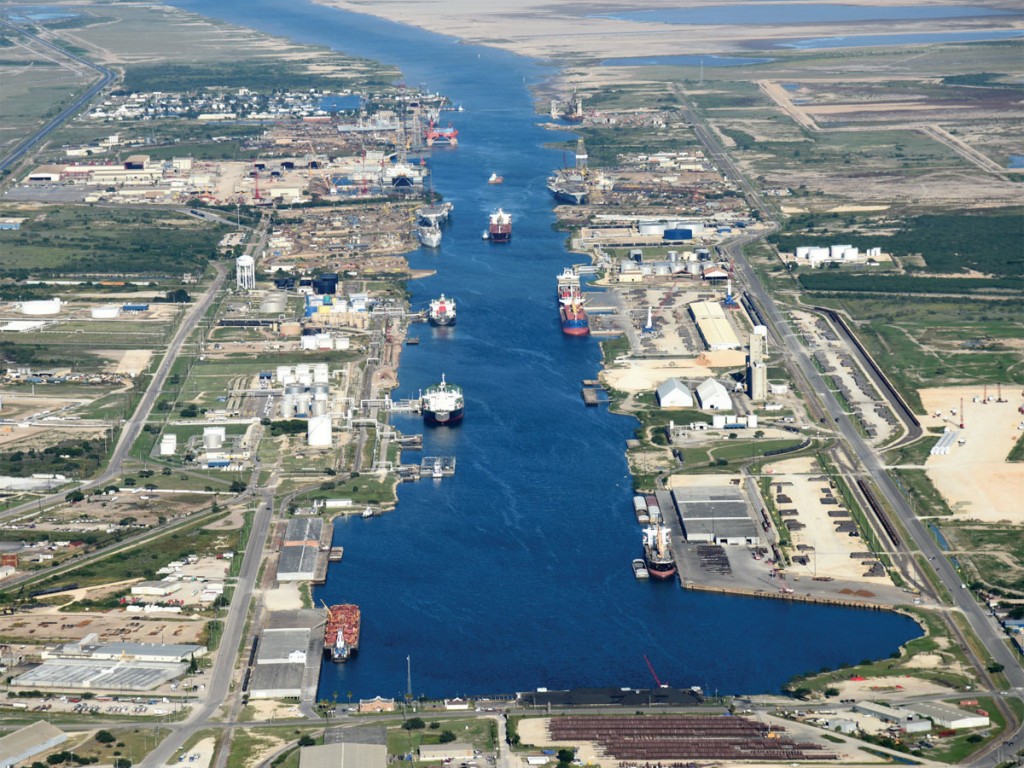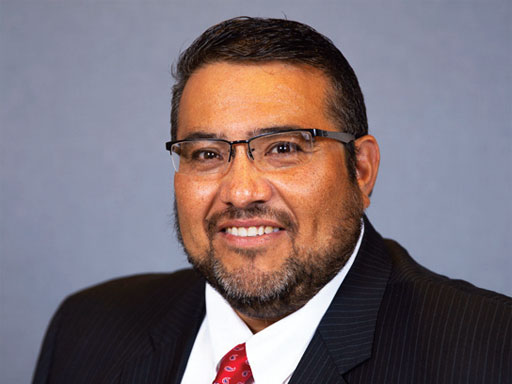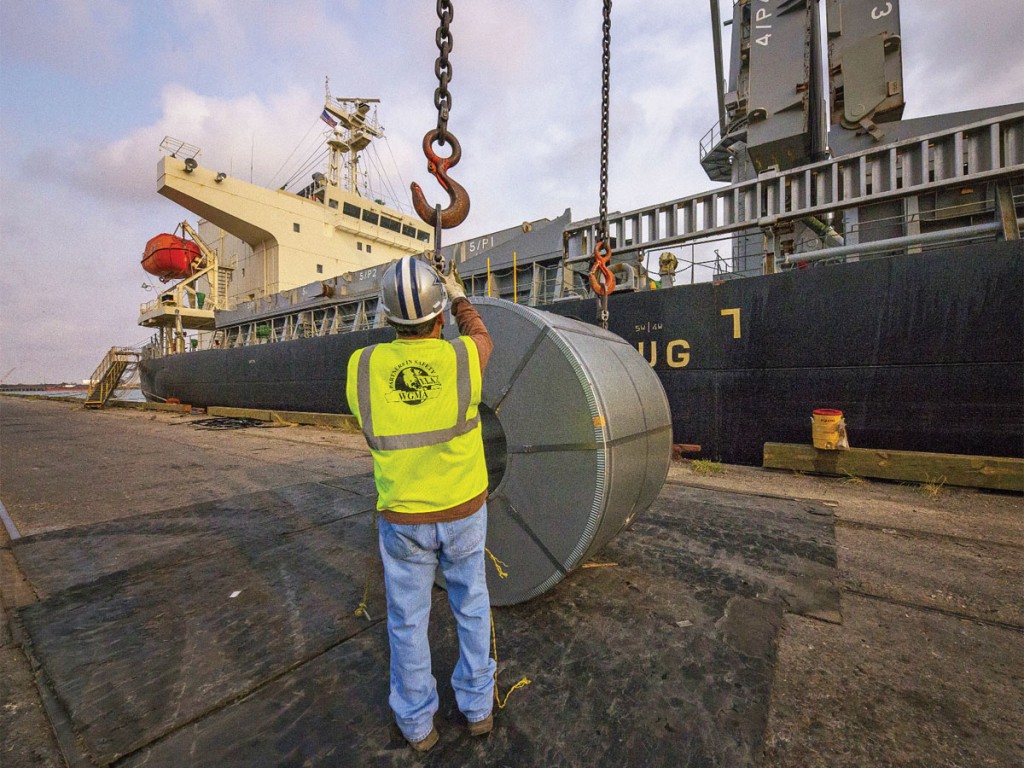Amid the growing uncertainties that plague global trade, Port of Brownsville is “cautiously optimistic” about its cargo traffic in 2019 as it pushes some major infrastructure projects, including its channel deepening project, that will bolster its cargo traffic and, in effect, its revenues.
While its cargo traffic faced a “little slowdown” in the first half of 2019, PoB, the only deep-water seaport directly located on the US-Mexico border, is hopeful that traffic and revenue for the entire present year will stabilize at the level of 2018.
“We did not have a substantial decline in traffic in the first six months of 2019 … there was a little slowdown but we hope that the overall 2019 figures will stabilize at the 2018 level. Nevertheless, I must confess there are too many uncertainties. Take, for example, NAFTA (North America Free Trade Agreement) whose successor revised agreement USMCA has been signed, but as of this moment not yet ratified by the U.S. Congress,” said Antonio Rodriguez, PoB’s Director of Cargo and FTZ Administrator, in an interview with the American Journal of Transportation on the sidelines of the recent Steel Success Strategies (see article on page 15) conference in New York.

Port of Brownsville’s $40 Million in Projects
PoB representatives attend the annual SSS conference because it gives them an opportunity to interact with the representatives of steel companies which ship to Mexico; the event is also a platform to get valuable insights on developments in the steel industry which has seen a strong revival in 2018, thanks to steel tariffs imposed under Section 232 of the Trade Act. However, as Rodriguez put it, “not everybody is sure about 2019 because of the ongoing trade dispute with China and other countries”.
Rodriguez, while pointing out that PoB has more than $40 billion worth of projects currently in the works, underscored the importance of business with Mexico which is the most important destination for shipments from PoB. “Besides steel, we handle aluminum, pig iron, iron ore, etc. Our region produces scrap, much of which is destined for Mexico, though some of it is also shipped to India, China, etc. We handle breakbulk cargo, including liquid petroleum, liquefied natural gas, windmill components, etc.,” he noted.
PoB moved in 2018 a record 11.3 million tons of diverse cargo segments with operating revenues of more than $24.2 million. The results show a 6.6% increase in cargo, a 25% increase in rail movements, and a 2.5% increase in operating revenues from the previous year.
The port’s Foreign Trade Zone No. 62 ranks second in the nation with exported goods valued at $3.6 billion, setting another record. The robust export trade firmly entrenches the port’s foreign trade zone as a consistent export leader. In the most recent report to the US Congress, FTZ No. 62 ranked number two for the third year in a row for the value of exported goods out of 293 FTZs in the US, reaching $3.6 billion for the reporting period.

Rodriguez maintained that PoB, thanks to its proximity to Mexico, remains a “critical gateway” for steel products entering Mexico’s industrial centers from across the globe. Arkansas-based Big River Steel recently extended its option for an expected investment of $1.6 billion for its proposed steel mill. And Keppel AmFELS announced an expansion to its port operations, introducing deep-draft ship building to Texas for the first time.
Ship Channel Project
Meanwhile, PoB has moved closer to commencing the deepening of the Brownsville Ship Channel after it recently received the requisite permit from the U.S. Army Corps of Engineers (USACE) to move the Brazos Island Harbor Channel Improvement Project (BIH) to its construction phase.
Describing the issue of the USACE permit as the “latest milestone” in the port’s effort to deepen the ship channel from 42 feet to 52 feet, PoB says this will result in significant navigational safety improvements for commercial shipping in South Texas. Indeed, John Reed, the Brownsville Navigation District chairman, recently said that “we find ourselves on the verge of a new economic era for the Rio Grande Valley and the channel deepening is essential for our continued progress and success”, adding these crucial infrastructure projects solidify PoB’s presence in the global market besides creating job opportunities.
When complete, the Port of Brownsville will be among the deepest ports on the Gulf of Mexico, enhancing its competitiveness by closely aligning with the design features of the expanded Panama Canal.
The project is estimated to cost over $350 million, with construction expected to commence in 2020. The port expects to pay for the project with a combination of public, private and federal funds.
Completion of the channel deepening is important in attracting new business opportunities and allowing existing companies at the port to further expand their services. In addition, the port will be able to accommodate deeper draft cargo vessels carrying heavier loads, which translates to a greater economic impact per vessel for the region.
PoB’s interest in the SSS conference is driven by its involvement in the steel transport business; as one of the nation’s top steel ports, PoB moves more steel into Mexico than any other domestic competitor, moving some 3.2 million tons of steel across to Mexico in 2018.

An attractive feature of PoB’s location is its proximity to Monterrey, a major industrial center in northern Mexico with a metropolitan population of nearly 5 million and home to dozens of commonly recognized international corporations. Monterrey is located 200 miles due west from the Port of Brownsville, where steel makers have come to rely upon the logistical facilities of the port. Convenient border crossings are located just seven miles from the port by truck and 13 miles by railroad.
In fact, the Port of Brownsville is more than 100 miles closer to Monterrey than the nearest Mexican port.
The PoB’s neighborhood, stretching to a radius of a three-hour drive from the port, provides a sizable 10 million consumer base, with many located south of the border. Moving cargo across the border in both directions is facilitated by a wide range of reliable transportation options, including rail, trucks, etc.
The port’s strategists calculate that the deepening of the port would attract the generation of larger ships, thus transporting greater cargo tonnage. With the additional draft created with the deepening of the port’s channel from 42 to 52 feet, the cost savings for shipping goods across the oceans reach an economy of far greater scale.
Panama Canal provides a good example. In recent years, ships have dramatically increased in length and draft; this prompted a massive expansion of the Panama Canal that became operational in 2016.
However, the cost of channel deepening is very high – as high as $ 350 million, according to PoB estimates. Creating an affordable financing strategy requires the right mix of fiscal sensibilities and creative solutions. The answer was found in a public, private partnership, combined with eligible federal dollars and port funds.





